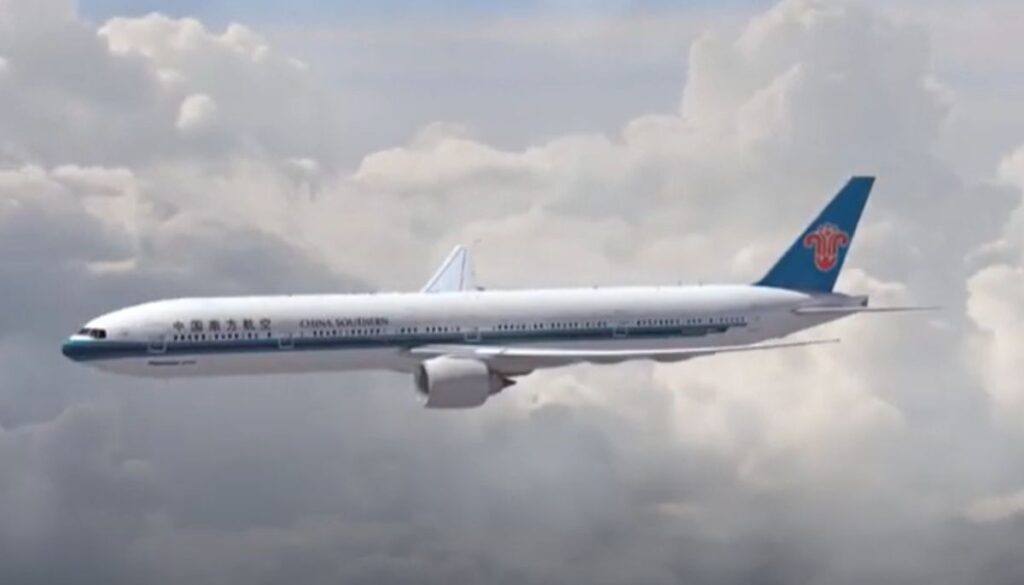Travelers between China and Mexico rejoice! China Southern Airlines has announced the restoration of direct flights between the two nations. This move not only strengthens the connection between these major economies but also bolsters Mexico’s position as a key gateway to the Americas.

The largest airline in China is about to launch its first nonstop service to Mexico, indicating the nation’s increasing significance as the second-largest economy in the world’s entry point into the Americas.
China Southern Soars Back to Mexico
China Southern Airlines Co. located in Guangzhou, is to launch direct service to Mexico City on April 17, according to a representative for the government-owned airline. According to a source with knowledge of the situation, the twice-weekly flights will leave from Shenzhen in southern China, verifying prior stories in the regional press.
At 14,147 kilometres (8,790 miles) long, the trip across the Pacific would take more than 16 hours, making it the longest flight in China and among the world’s longest regular routes. It’s continuing despite obstacles related to topography and distance that prevent the return without a layover, indicating how popular Mexico has grown among Chinese companies looking to avoid tensions between Beijing and Washington.
China-based suppliers to Tesla Inc. are among the businesses that have recently established plants in Mexico; the leader in electric vehicles, BYD Co., is expected to follow. The southern neighbour of the United States has been receiving ever-larger shipments of commodities from the Asian nation, a tendency that has intensified since the outbreak.
The Economic Secretary of Mexico reported that in 2022, China’s direct investment in Mexico hit a record-breaking $587 million. According to Bank of Mexico data for the 12 months ending in November 2023 compared to the same time in 2019, the two-way trade between the two countries has increased by 38% during the previous four years.
Also Read: PM MODI INAUGURATES HISTORIC HINDU STONE TEMPLE IN ABU DHABI
According to data from the Mexican government, the number of Chinese tourists visiting Mexico in 2023 increased significantly to 161,300 entries, barely missing pre-pandemic levels.
High Altitude: There haven’t been any direct flights since the pandemic, despite the fact that business between the two nations is booming. This is partially due to the fact that fully loaded aircraft are unable to use as much engine power to take off on the longer flights due to Mexico City’s elevation of 7,300 feet.
Prior to Covid, Aeromexico, Hainan Airlines Holding Co., and China Southern, which operated flights between Guangzhou and Mexico City with a stop in Vancouver, were the three airlines that provided a total of eight round-trips each week between China and Mexico. According to the source, Hainan Airlines is reportedly looking to start operating a route to Tijuana even though Aeromexico hasn’t made a comeback.
Representatives from Hainan Airlines didn’t respond to a request for comment. China’s Ministry of Transport also didn’t respond to a request for comment.
Trade Frictions:
Tense relations with the largest economy in the world have also made it difficult for China to start offering direct services to the US again. There are currently just 100 weekly direct flights, down from 340 prior to the epidemic. The additional challenge for US carriers is navigating through Russian airspace that is prohibited.
Restoring connections with nations that are open to commerce has been a top focus for China’s carriers since the outbreak. Chinese President Xi Jinping urged for increased trade with Mexico in November, citing opportunities in finance, electric vehicles, and other growing sectors.
“We reiterated our commitment to continue maintaining good relations for the benefit of our people and our nations,” Mexican President Andres Manuel Lopez Obrador said in a post on X after meeting with his counterpart at a trade summit in San Francisco.
With its new service, China Southern bypasses Beijing and Shanghai in favour of Shenzhen, a booming centre for manufacturing and technology. It is home to BYD, a company that depends on export sales growth in Mexico and the surrounding area. As Chinese automakers gauge global consumers’ desire for fashionable, reasonably priced, and technologically advanced electric vehicles, Mexico also serves as a showcase for their EV brands.
Washington officials, who have aimed to protect the domestic industry by preventing lower-cost Chinese electric vehicles from entering the US market, are becoming increasingly irritated with Mexico’s closer ties. Chinese EVs are subject to US taxes of 27.5%, and the nation’s internet-connected cars are being closely examined for cybersecurity and data breaches.
The pushback on autos and semiconductors prompted Chinese foreign minister Wang Yi earlier this month to blast the US for reaching “bewildering levels of unfathomable absurdity” on trade and sanctions.
FAQs:
1. When will China Southern Airlines resume direct flights to Mexico?
Specific dates haven’t been announced yet, but the news indicates a planned resumption of direct flights in the near future.
2. What cities will be connected by the direct flights?
While official details are pending, major cities in China like Guangzhou or Beijing could potentially connect with Mexico City or other key Mexican destinations.
3. Why is this a significant development for travel?
Direct flights offer travelers greater convenience, shorter travel times, and potentially more affordable fares compared to connecting flights. This can significantly boost tourism and business travel between China and Mexico.
4. How will this impact trade between China and the Americas?
Improved air connectivity can facilitate smoother movement of goods between China and Mexico, potentially increasing trade volumes. Mexico’s established trade agreements with other American countries could further enhance China’s access to the Americas market.
5. What does this mean for Mexico’s position as a gateway?
The return of direct flights strengthens Mexico’s role as a strategic hub connecting China with the wider Americas region. It positions Mexico to leverage its geographical location and trade partnerships to become a crucial link in global trade.










